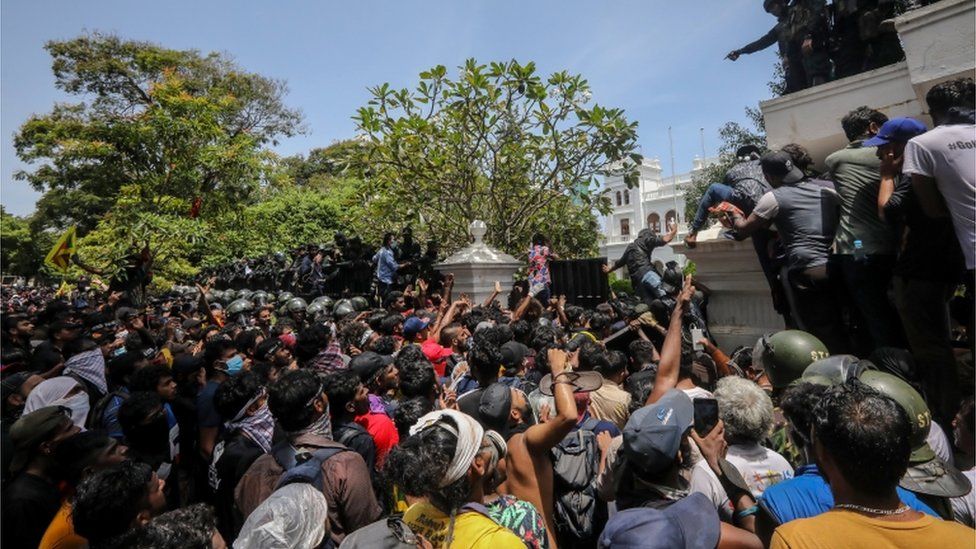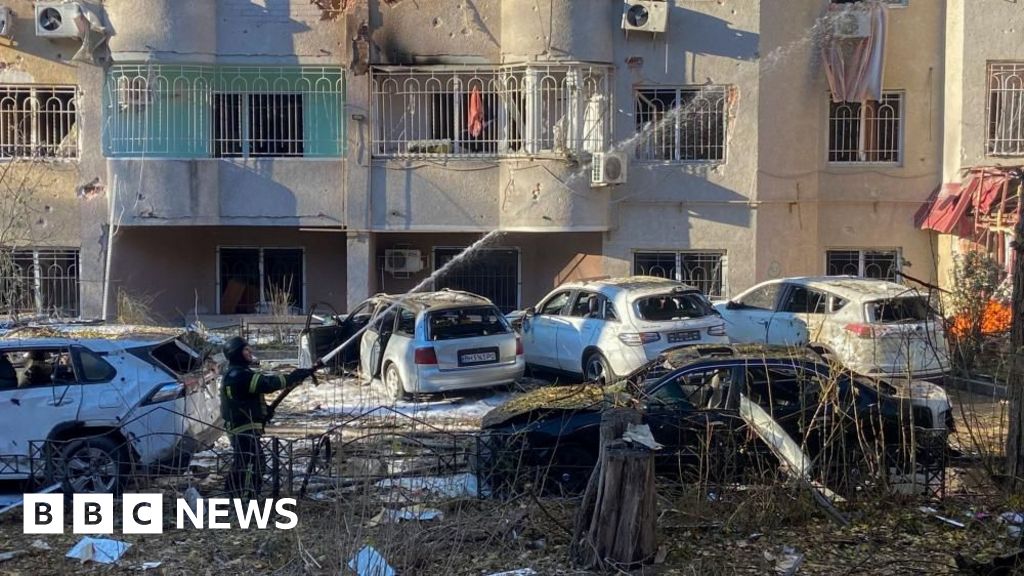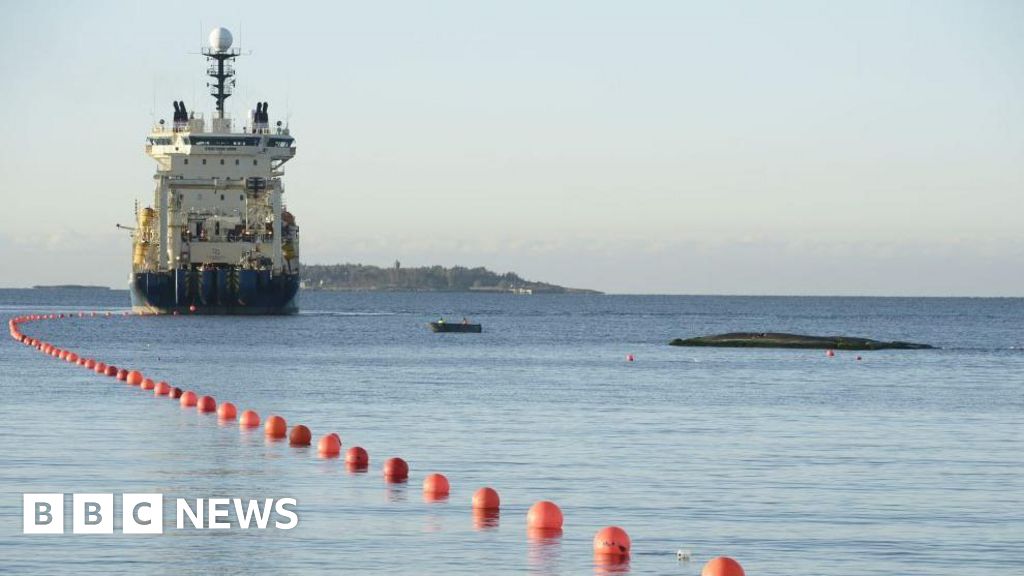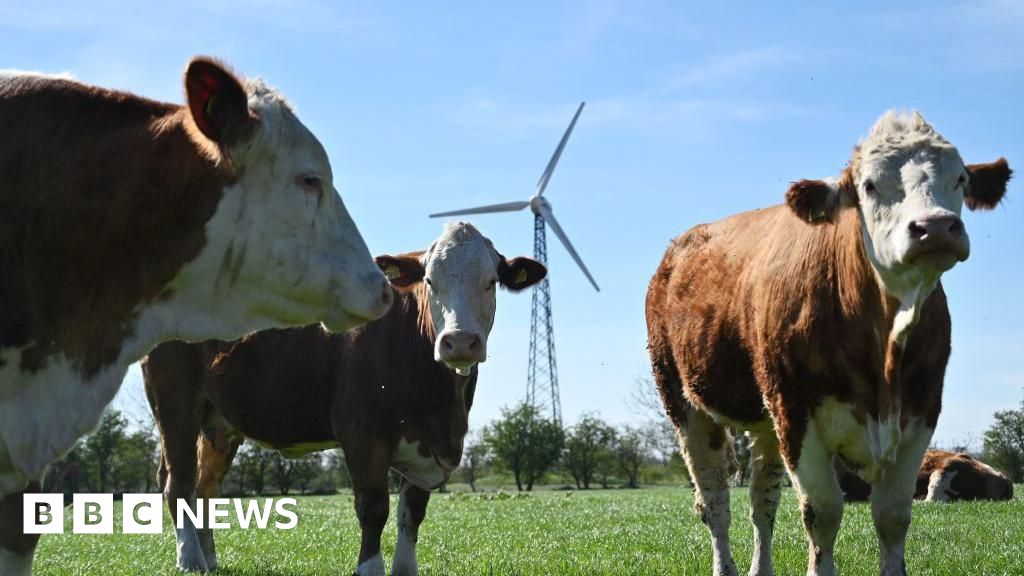ARTICLE AD BOX
By Medhavi Arora
World Service Disinformation Team
 Image source, EPA/CHAMILA KARUNARATHNE
Image source, EPA/CHAMILA KARUNARATHNE
While protesters did in fact break into the prime minister's office in Colombo, other viral claims wrongly stated other official buildings were invaded
Mass protests over Sri Lanka's worst economic crisis in decades have escalated this past week after crowds breached official buildings.
But while protesters did in fact force their way into the Sri Lankan presidential residence and break into the prime minister's office in Colombo, misleading claims of other break-ins spiralled on social media.
We've looked at a viral claim that the island's national broadcaster had been "taken over", as well as a video alleging that protesters had broken through to Sri Lanka's Central Bank.
No, protesters did not "take over" Sri Lanka's national broadcaster
On Wednesday, major global media outlets mistakenly reported that Sri Lanka's national broadcaster Rupavahini was taken over by protesters.
Some social media posts wrongly suggested that protesters had taken over anchoring duties for the national broadcaster.
The BBC reached out to directors at Rupavahini to understand what happened at their premises on Wednesday.
Protesters left the premises of Sri Lanka's national broadcaster after being granted 15 minutes of airtime
According to Rupavahini's Assistant Director and Head of Foreign News Mr Prasad Kaushalya Dodangodage, the protesters arrived at the premises uninvited on Wednesday afternoon with a list of demands. After a discussion with directors at the national broadcaster, they were provided an interview slot.
During the interview one of the protesters made a misleading claim in Sinhala that Rupavahini will only broadcast programmes of the Jana Aragalaya, or the protesters' movement against the government. "Aragalaya" in Sinhala means "struggle".
Rupavahini does not subscribe by this, Mr Prasad told the BBC. The protesters left the premises after being granted 15 minutes of airtime. While broadcasts were briefly suspended, they later resumed, and the broadcaster returned to routine programming.
By then, the misleading claim that protesters "took over" Sri Lanka's national broadcaster had been widely shared on social media by verified handles and by major news outlets, including some with millions of followers.
No, protesters did not storm Sri Lanka's Central Bank
A viral video on Twitter with over 1.5 million views claimed that protesters had stormed into Sri Lanka's Central Bank. The video was posted by a handle which claims to belong to an independent news agency.
The video showed a large crowd of protesters - many of them dressed in black, some wearing helmets and some carrying the Sri Lankan flag - cheering as they opened a large gate and entered the premises of a building.
In reality, protesters did not storm the Central Bank.
Video shows protesters breaking through gates located on the road where the Central Bank is based, but not into the institution itself
The BBC analysed images from the viral video. They show protesters breaking through gates located on Janadhipathi Mawatha - the road where the Central Bank is based.
But the video does not show protesters entering the Central Bank itself.
This was confirmed by the BBC with local sources and by a Sri Lankan fact-checking service called WatchDog, which said their team members on the ground confirmed that no protesters entered the Central Bank.
The presidential residence is 400 metres away from the Central Bank, according to Google Maps.
The false claim was widely shared on social media. The BBC reached out to Twitter for comment. The company added a "False Context" label in accordance to their policies to one of the tweets sharing the misleading claim.
Indian government denies helping the Rajapaksas flee
On Wednesday, the Indian government denied reports that it helped Sri Lankan President Gotabaya Rajapaksa and former Finance Minister Basil Rajapaksa flee the country.
President Gotabaya Rajapaksa fled to the Maldives on Wednesday. On Thursday, President Gotabaya Rajapaksa, his wife, and personal bodyguards left the Maldives for Singapore.
Image source, EPA/CHAMILA KARUNARATHNE
Image caption,Police used tear gas to disperse protestors
The Indian High Commission in Sri Lanka described the reports of the Indian government helping the Rajapaksas flee as "baseless and speculative."
This is not the first time the Indian government has issued a statement to deny helping Sri Lankan politicians flee. In May, the day after Prime Minister Mahinda Rajapaksa resigned, the Indian High Commission in Sri Lanka denied reports that "certain political persons and their families" have fled to India.
On Sunday, the Indian government also denied reports that it sent troops to Sri Lanka. The same statement was issued by the Indian government in May as well. There were also rumours about India supplying a water cannon vehicle to Sri Lanka which India denied.
Additional reporting by Josh Cheetham and Maryam Azwer

 2 years ago
37
2 years ago
37








 English (US)
English (US)